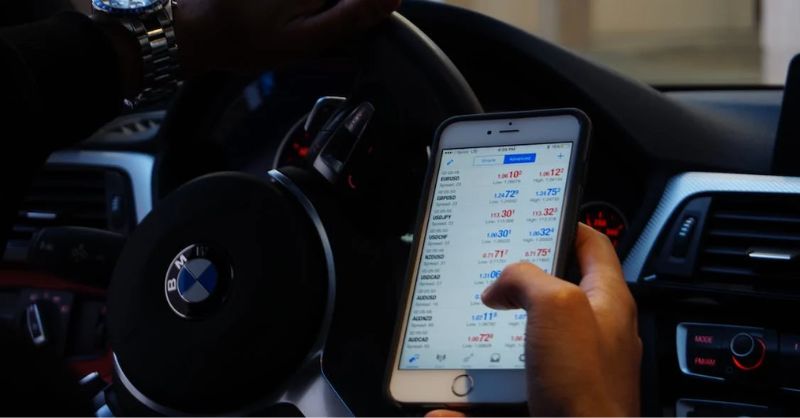Currently, businesses and individuals are embracing cryptocurrencies and trends with open arms. But not all is well in the crypto world. Besides price volatility and technical complexity, trading and storing cryptocurrencies poses significant challenges due to the presence of crypto hackers.
This makes it crucial for crypto owners to protect their private keys that serve as proof of ownership and are needed to access crypto holdings.
Enter crypto wallets. With over 84.02 million users worldwide and a global market size worth US $8.42 billion, crypto wallets are becoming increasingly popular among crypto enthusiasts to hold their private keys securely.
Although vital for crypto holders and traders, crypto wallets are not 100% secure and struggle to keep crypto hackers and information-stealing bots at bay. So what steps can crypto owners take to protect their crypto wallet? Let’s find out.
Your Comprehensive Guide to Protecting Your Crypto Wallet from Crypto Thieves
Before we dive into ways to help you protect your crypto wallets, let’s first understand what they are.
Unlike traditional wallets that are used to store money, crypto wallets don’t hold your crypto holdings.
Your cryptocurrency remains stored on the blockchain, but a crypto wallet will securely hold your private and public keys so you can access and trade your cryptocurrencies seamlessly. They also read the public ledger so that you can keep an eye on your crypto account balance.
Depending on your trading and security needs, you can pick a hot or cold wallet to store your private key.
While hot wallets, such as web-based and mobile wallets, are easy-to-use and are always connected to the internet, they’re also extremely vulnerable to hacker attacks. On the contrary, cold wallets, such as paper and hardware wallets, are more expensive, stored offline, and difficult to use, but the risks are also diminished.
Crypto wallets are being upgraded everyday, with some multi-chain crypto wallets also connecting users to various DeFi and NFT applications.

Although crypto trading and crypto wallets go hand-in-hand, they’re not without their vulnerabilities.
Vulnerabilities associated with crypto wallets
Among the host of vulnerabilities associated with crypto wallets, the potential for hackers to identify and exploit gaps in a hot wallet’s software or app is the most prominent.
Case in point, nearly 8,000 wallets were attacked in 2022 to steal over $5 million worth of Solana and USDC cryptocurrencies. To pull off this attack, the hacker used just four accounts to exploit the vulnerabilities in a mobile wallet app.
Wallet apps that promote the export of private keys also enhance the risks of hacks and thefts. Mobile-based, web-based, and desktop-based wallets risk being exploited if they’re not encrypted and secured adequately or fall into the wrong hands.
Moreover, if an attacker cannot steal your private and public keys, they’ll deploy malware, bots, and data dump techniques to gain access to your crypto wallet.

5 Ways to protect your crypto wallet from hackers and bots
Since your crypto funds are as good as your private key’s security and you need them to conduct crypto transactions online, keeping them safe and accessible in a dependable wallet is paramount.
Here are some of the best ways you can employ to keep your crypto wallet safe from hackers and bots.
Choose a crypto wallet that’s secure and suits your needs
The first step is to determine your risk appetite and decide whether you’d like complete control over your cryptocurrencies.
For instance, custodian wallets are perfect for individuals who want to deposit their crypto funds with a trusted third party.
Custodial accounts save you from the hassle of keeping your private key safe, but, on the downside, you won’t have access to it. Such wallets offer a user-friendly interface and are an excellent option for beginners, but they also give the custodians the power to oust you from your account should the platform come under fire.
On the other hand, with non-custodial wallets, only you’ve access to your private key. You can store your key offline and control funds without any third-party risks. But you’ll also be responsible for your cryptocurrencies’ safety and your chance of being locked out of your account if you forget your wallet’s key identifying information.
Once you choose the type of wallet you’d like to invest in, you can begin buying and selling your cryptocurrency how you want. Several platforms, such as MoonPay, facilitate the secure purchase of cryptocurrencies, like Bitcoin.
Through MoonPay’s secure infrastructure, you can buy Bitcoin in almost 150 countries using your debit or credit cards, Apple Pay, or Google Pay. Knowing how to buy Bitcoin on MoonPay is just one facet of the two-faced coin. You can also sell your bitcoin quickly and easily on MoonPay.
Beware of crypto bots to safeguard your wallet
Nowadays, scammers are actively relying on bots to drain a crypto holder’s funds.
One of the most popular and accessible bots to deploy is the OTP (one-time password) bot. These bots go for the jugular and breach the two-factor authentication (2FA) security measure used by almost all crypto owners and wallet holders.
To engineer attacks and steal cryptocurrencies, OTP bots collect information about their intended targets, such as whether they’ve any crypto and where they store their crypto, country, or state of residence. After they’ve all the details, they log on to the crypto platform (the ones where their targets have accounts) and log in, pretending to be the actual owners of the account.
This process triggers the platform to send a 2FA security message to the actual owner of the account. Now is the time for the bots to shine. They call the account owners incessantly, tell them in an ‘authoritative’ voice that their account is in jeopardy, and leverage their fear and confusion to get them to share their 2FA code with the bot.

Image credits: Kindel Media/Pexels
OTP bots are gaining prominence among the scammer community as they’re incredibly efficient and can be hired for as low as $300 a month through Telegram. These bots recently stole over $100,000 worth of cryptocurrency from a Maryland couple.
Another type of bot that’s gaining prominence globally is the sneaker bot—wondering what is sneaker botting?
Sneaker botting is the process through which scammers and sneaker enthusiasts hire bots to buy limited-edition sneakers before they’re sold out. Although they primarily target the footwear industry, their heightened success could also make them useful in the crypto space.
Other popular bots to look out for include Twitter and sweeper bots.
Use several wallets and secure each with a unique password
Using multiple crypto wallets is an effective way to keep your cryptocurrencies safe. This will also ensure that you don’t lose all your crypto savings in one go should one of your wallets fall into the clutches of a hacker.
For instance, you could use a hot wallet for trading cryptocurrencies and one or more cold wallets to store your cryptocurrencies.
To truly secure your wallets, you also need to encrypt each one using a different and unique password.
This is important since most people either use the same password across accounts or use a password that takes hackers and thieves less than one second to crack. NordPass’s list of the top 200 most common passwords includes the word ‘password’, 123456, and 123456789 as the top three passwords used by individuals in 2022.

If you use either of the listed passwords in the reports to secure your crypto wallets, it’s high time you changed them. So while creating a strong password for your wallet, ensure that it’s at least 12 characters long, rare, unguessable, and is a mix of letters, numbers, and symbols.
The next thing you can do is regularly update your passwords to enhance the security quotient of your wallet and use the best password identity management solution.
Use a VPN to hide your web activity
A VPN or virtual private network can help you mask your web activity by changing your IP address and location. This throws hackers off your scent since they can’t monitor or track your online activity as easily.
So ensure that you connect your device to a secure VPN whenever you engage in crypto trading or access your crypto wallet, and never log in to your crypto accounts using unsafe or public Wi-Fi connections.
Buy licensed antivirus software and keep it up-to-date
One of the best ways to reduce your crypto wallet’s vulnerabilities is to invest in licensed antivirus software and ensure it’s updated. A robust antivirus solution will scan all your incoming emails and warn against potential phishing attacks.
Secure your crypto wallets for a safe trading and storage experience
There are innumerable bad actors in a play who’d like nothing more than to steal your hard-earned cryptocurrencies. But it’s up to you to take care of your crypto wallet and ensure it’s always safe and secure.
Since knowledge is power, being updated on the latest bots and crypto happenings will help you take proactive steps to secure your crypto holdings and wallets.
Author Bio: Arjun Ruparelia| Email – [email protected]
An accountant turned writer, Arjun writes financial blog posts and research reports for clients across the globe. Arjun has five years of financial writing experience across verticals. He is a CMA and CA (Intermediate) by qualification.















